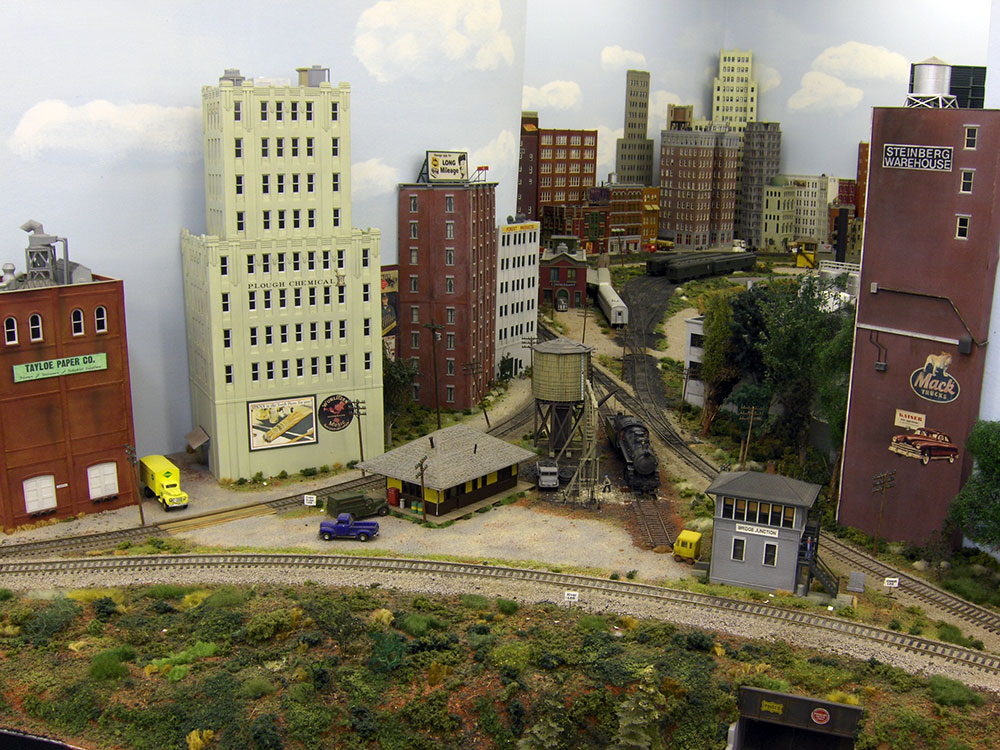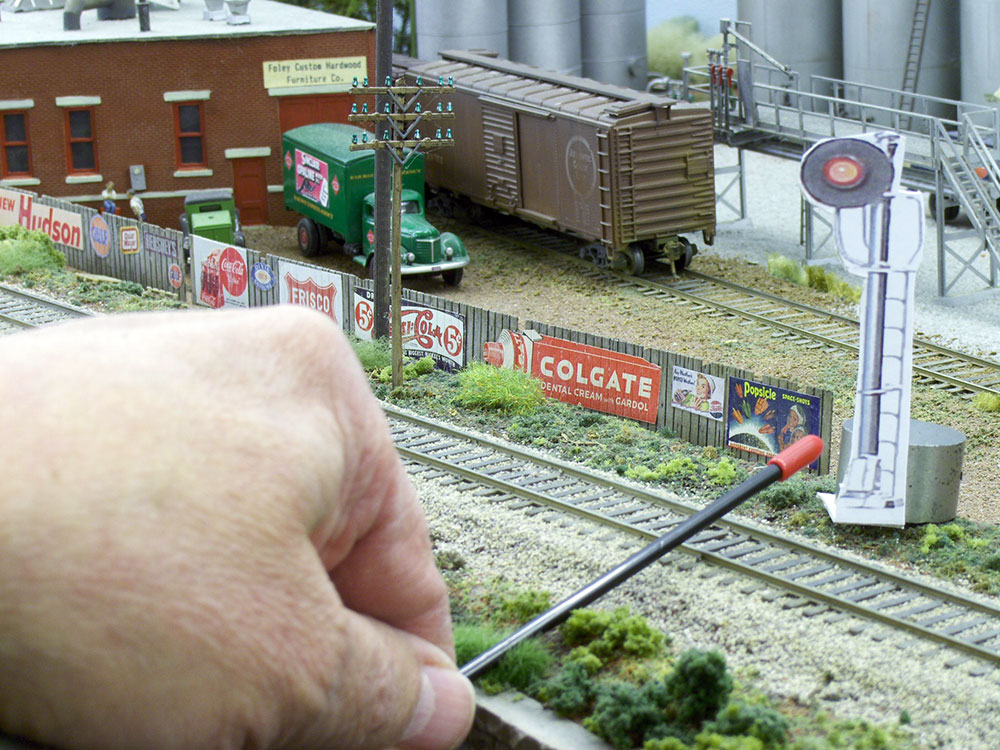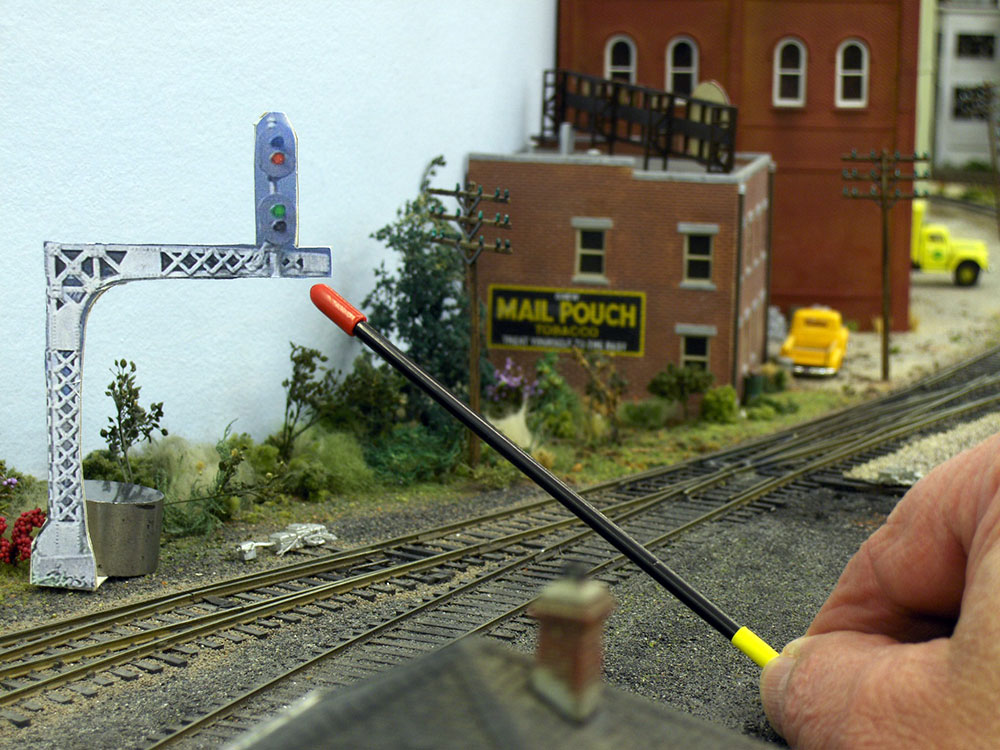On my model railroad of the Bluff City Southern there is a bottleneck, but it’s a fun bottleneck. The five railroads that I model come together at this bottleneck. It’s the wye at Bridge Junction leading from Memphis into Arkansas across the Mississippi River. When I designed the layout I knew that a busy junction would be a key part of the operation. Lately though I have thought it would even be more fun if the wye were signaled. So I set about learning about an interlocking plant. I hope this will give you some ideas for a simple signal installation.
I asked my friend and longtime BCS operator Kevin Kizer to help me. Kevin was a signal maintainer and engineer for Pioneer Rail Corp, the operator of 17 short lines in the Eastern US.
Kevin knows about signals—what type to use, where to place them and most important of all how to interlock them with the manual switches! This blog entry is only an overview of what we plan to do in a series of articles on signal installation over the next several months.
Approach Signals
Here is what Kevin said we needed:
Starting in Mississippi we need an approach signal. He recommended that we use a searchlight here and in the other two areas requiring approach signals.
We also need an approach signal before the bridge over the river. Approach signals are normally yellow for caution.
And the last place for an approach signal is in Tennessee before the wye. The approach signals tell the engineer to slow and prepare to stop at the interlocking home signal.
Home Signals
Home signals are absolute signals – a red aspect means the train must stop before the signal. When a green is shown for the train’s desired route the engineer is now free to proceed at slow speed through the interlocking.
With those signals placed, let’s look at what is next. Leaving Bluff City yard we will need a cantilevered home signal with two heads. The top head is for the main route to Tennessee and the bottom head is for the diverting route to Arkansas. The cantilevered bridge was used because of limited clearance leaving the yard. It and the others protecting the entrances to the wye are called home signals.
After leaving the Mississippi Bridge another two-headed home signal is used. The top head is for the route to Tennessee and the other head is for the route to Mississippi.
The final home signal is placed close to the track near the commissary before entering the wye from Tennessee. The top signal is for the route to Mississippi and the bottom head is for the route to Arkansas.
The home signals change color as the switches are thrown for the various possible routes through the interlocking plant. An interlocking plant is nothing more than a series of switches and signals that are locked in such a way that routes are protected from conflicting movements through a grouping of tracks. It means that operators cannot align a route through the wye that will cause a derailment. Hopefully!
Here is what we plan to eventually have when we complete this series. There are more signals here than mentioned above; three of them are dwarf signals. We still have to pick out the signals, design the circuits to make everything work, and install the switches.
More in this series:
Installing Approach Signals for an Interlocking Plant: Part 2
Installing Approach Signals for an Interlocking Plant: Part 3
Have something to add to the story? Leave a comment or connect with us on Facebook.








The signal on the track labeled “Union Station” probably ought to be something other than a single head mast. If you’re using route signaling as the article implies then since trains from there can go to Mississippi or Arkansas it should have a second head for the other route. If you’re instead using speed signaling it could be a dwarf, restricting trains leaving the station to slow speed till they clear the interlocking. A green on a single head mast indicates full speed which you probably don’t want when negotiating the diverging route of the turnout that’s coming up.
Your approach signal would be called here in Victoria,Australia a distant signal.Paul R.
Allen, I grew up there in Memphis. Your diagram doesn’t seem correct. It’s a mirror image of the actual wye. Mississippi would be to the right coming off the bridge. Tennessee lines would be north to left or straight through.
Hello, yeah this post is in fact nice and I have learned lot of things from it on the topic of blogging. thanks.
I just could not go away your website prior to suggesting that I actually enjoyed the usual information a person supply on your visitors? Is going to be again incessantly in order to check up on new posts
do you have a video of where to place signals.